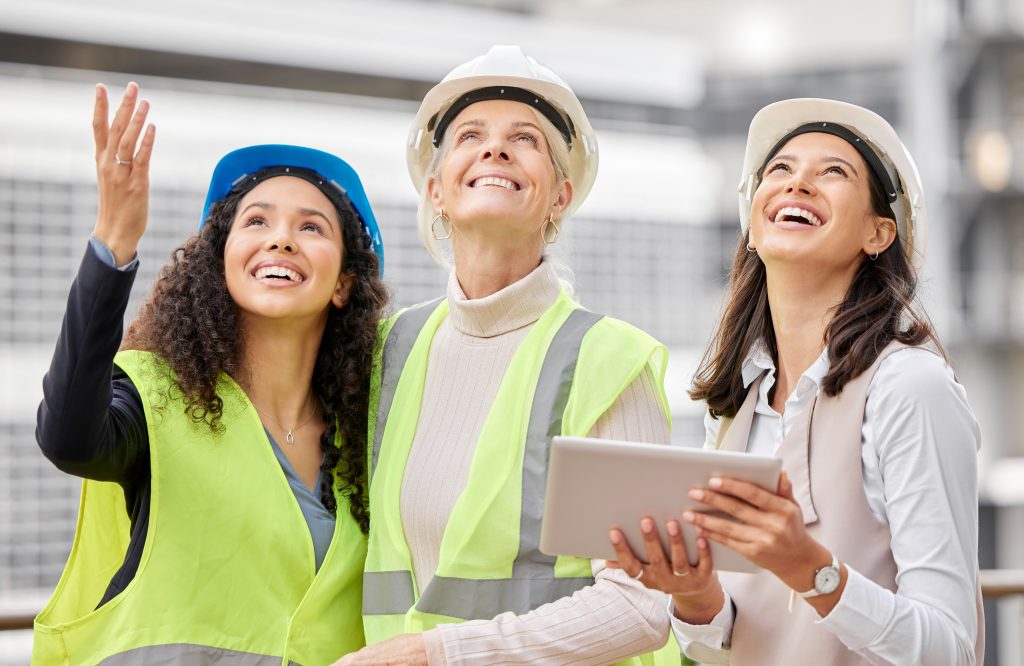Picture this: you’re on a bustling construction site, surrounded by the sounds of machinery, the chatter of your colleagues, and the unmistakable scent of freshly cut wood. You glance around, feeling empowered as one of the few women on site, but a nagging thought creeps in—Is this environment as safe as it should be for someone like me?
As women increasingly break barriers in the construction industry, stepping into roles once dominated by men, it’s crucial to address the unique challenges they face in creating a safer work environment. The construction industry is evolving, and so should our approach to safety.
In a world where female representation in construction is steadily rising, companies must implement strategies that protect and empower. In this article, let’s delve into the essential strategies for building a safer work environment tailored to women in construction.

Different Roles Women Play in the Construction Industry
Women in the construction industry occupy a diverse range of roles, contributing their skills and expertise across various sectors. Here are some key positions that women hold in the construction field:
- Project Managers,
- Engineers,
- Architects,
- Construction Workers,
- Skilled Tradespeople, and so on.
Now, let’s know, in the following pointers, about the strategies that the companies can implement for women’s safety.
1. Promote Awareness and Training
Education is key to fostering a safe work environment. Companies should implement regular safety training programs that specifically address the unique challenges faced by women on construction sites. Training should cover topics such as:
- Hazard Recognition: Women should be trained to identify and mitigate risks specific to their roles.
- Emergency Response: All workers should know how to respond in emergencies, ensuring that women feel prepared to handle unexpected situations.
- Sexual Harassment Awareness: Training should also address workplace harassment, helping to create a culture of respect and support.
Also, partnering with New York Safety Consulting companies can ensure that the training happens seamlessly and covers all the essential topics. The organizations can connect with the professionals via free consultation calls. This way, the safety of women can be easily restored.
2. Encourage Open Communication
Creating a culture of open communication can empower women to voice their concerns. For example, a construction company could hold regular meetings where team members can discuss safety issues or share personal experiences. In one of these meetings, a female worker might express her discomfort with the equipment she uses, highlighting specific unsafe features.
Regular meetings where team members can discuss safety issues or personal experiences can help:
- Build trust among workers.
- Identify potential safety hazards.
- Encourage women to report unsafe conditions without fear of retaliation.
3. Implement Mentorship Programs
Mentorship can be a powerful tool in supporting women in construction. Pairing less experienced female workers with seasoned mentors can provide them with the necessary guidance and improve overall safety practices. Mentors can:
- Share valuable insights and experiences related to safety.
- Help navigate the challenges unique to women in the industry.
- Offer emotional support in a predominantly male environment.
4. Foster a Supportive Work Culture
A workplace culture that prioritizes inclusivity can significantly impact safety and well-being. Companies should:
- Celebrate diversity and encourage collaboration among all workers.
- Create employee resource groups for women in construction, providing a safe space to discuss challenges and share strategies.
- Recognize and reward safe practices to reinforce their importance.
5. Enhance Personal Protective Equipment (PPE)
Ensuring that women have access to properly fitting personal protective equipment is crucial for their safety, specifically in the construction industry. Companies should:
- Provide a variety of PPE sizes to accommodate different body types.
- Seek feedback from female workers about their needs and experiences with existing equipment.
- Regularly review and update PPE policies to align with best practices in safety.
6. Implement Flexible Work Policies
Flexibility can help create a more supportive environment for women in construction, especially those balancing work and family responsibilities. Strategies can include:
- Offering flexible scheduling to accommodate personal needs.
- Providing paid family leave to support work-life balance.
- Allowing for remote work when possible, particularly for administrative tasks.
7. Leverage Technology for Safety
Technology can play a vital role in enhancing workplace safety. Tools such as wearable devices can monitor workers’ vital signs and alert supervisors to potential health risks. Other technological solutions might include:
- Safety apps that enable workers to report hazards or injuries quickly.
- Virtual reality training programs that simulate real-world scenarios for improved hazard recognition.
Concluding Thoughts
Building a safer work environment for women in construction is not just a moral imperative; it also enhances overall productivity and employee satisfaction. As more women join the ranks of construction professionals, it’s essential to prioritize their safety and well-being, paving the way for a brighter, more equitable future in the industry.





